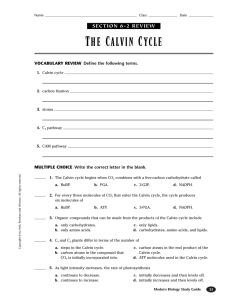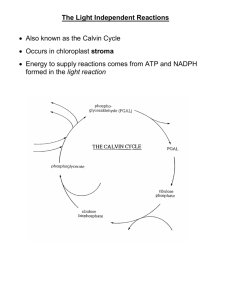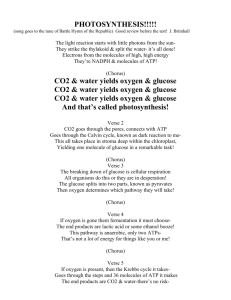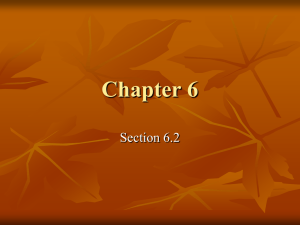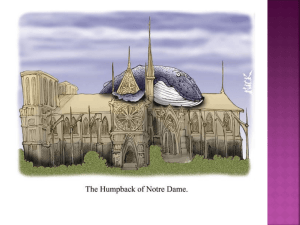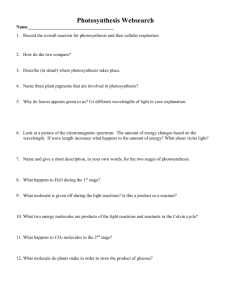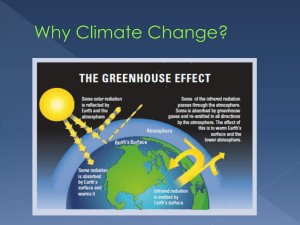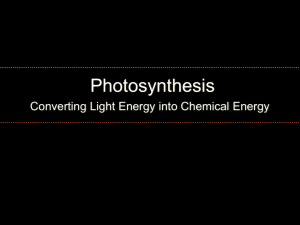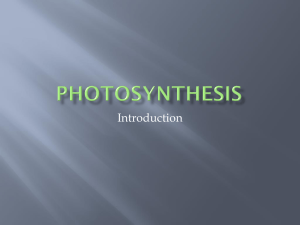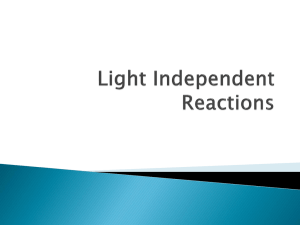More than you ever wanted to know about photosynthesis (part 2)
advertisement
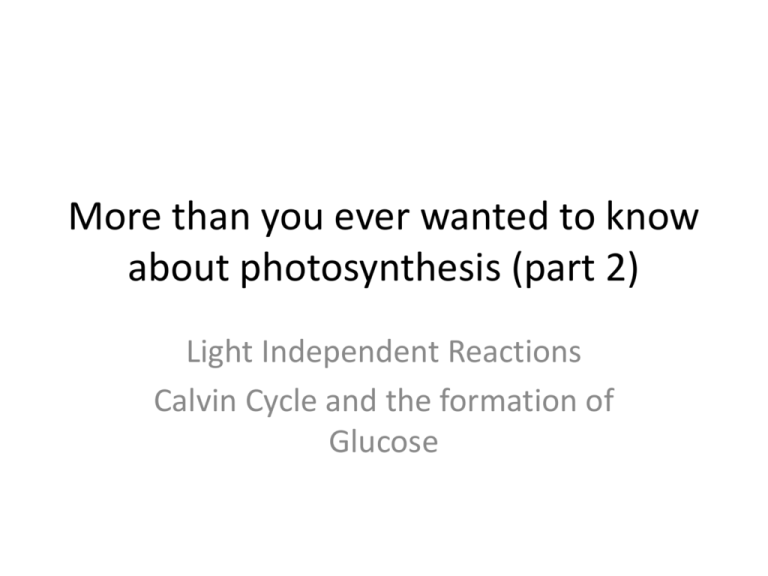
More than you ever wanted to know about photosynthesis (part 2) Light Independent Reactions Calvin Cycle and the formation of Glucose Melvin Calvin • Nobel Prize winner 1961 • Discovered the cycle by which glucose is produced in plants, now know as the Calvin Cycle Simple Explanation • Carbon dioxide enters the cycle • Energy from ATP and NADPH produced from photosystem II and ATP synthase is used to join carbon molecules together • Glucose is formed Step 1 • 6 molecules of a 5carbon sugar called ribulose biphosphate (RuBP) combine with 6 molecules of CO2 to form 12 molecules of a 3-carbon compound called phosphoglycerate (PGA) Step 2 • Energy from 12 ATP and 12 NADPH produced from light reactions is used to convert the 12 PGA into 12 high energy molecules called phosphoglyceraldehyde (PGAL) Step 3 • Two PGAL molecules leave the cycle to form a glucose molecule (6 carbon sugar) Step 4 • 6 ATP provide the energy needed to convert the 10 remaining PGAL molecules into 6 RuBP molecules • The cycle begins again… C4 Plants • Certain tropical plants have an additional pathway to transport CO2 into the Calvin cycle. • 4-carbon compounds are created in specialized leaf cells which is transported to cells where photosynthesis occurs • The 4-carbon compound is broken down into CO2 and is available for photosynthesis in addition to the CO2 that enters the leaves through stomata • This CO2 pump increases the rate of photosynthesis CAM Plants • Cassulacean Acid Metabolism • Plants that live in hot dry climates can not keep their stomata open during the heat of the day. • They open their stomata at night and store CO2 as organic acids in vacuoles • The acids release the CO2 the next day inside of the plant so photosynthesis can occur while the stomata are closed

